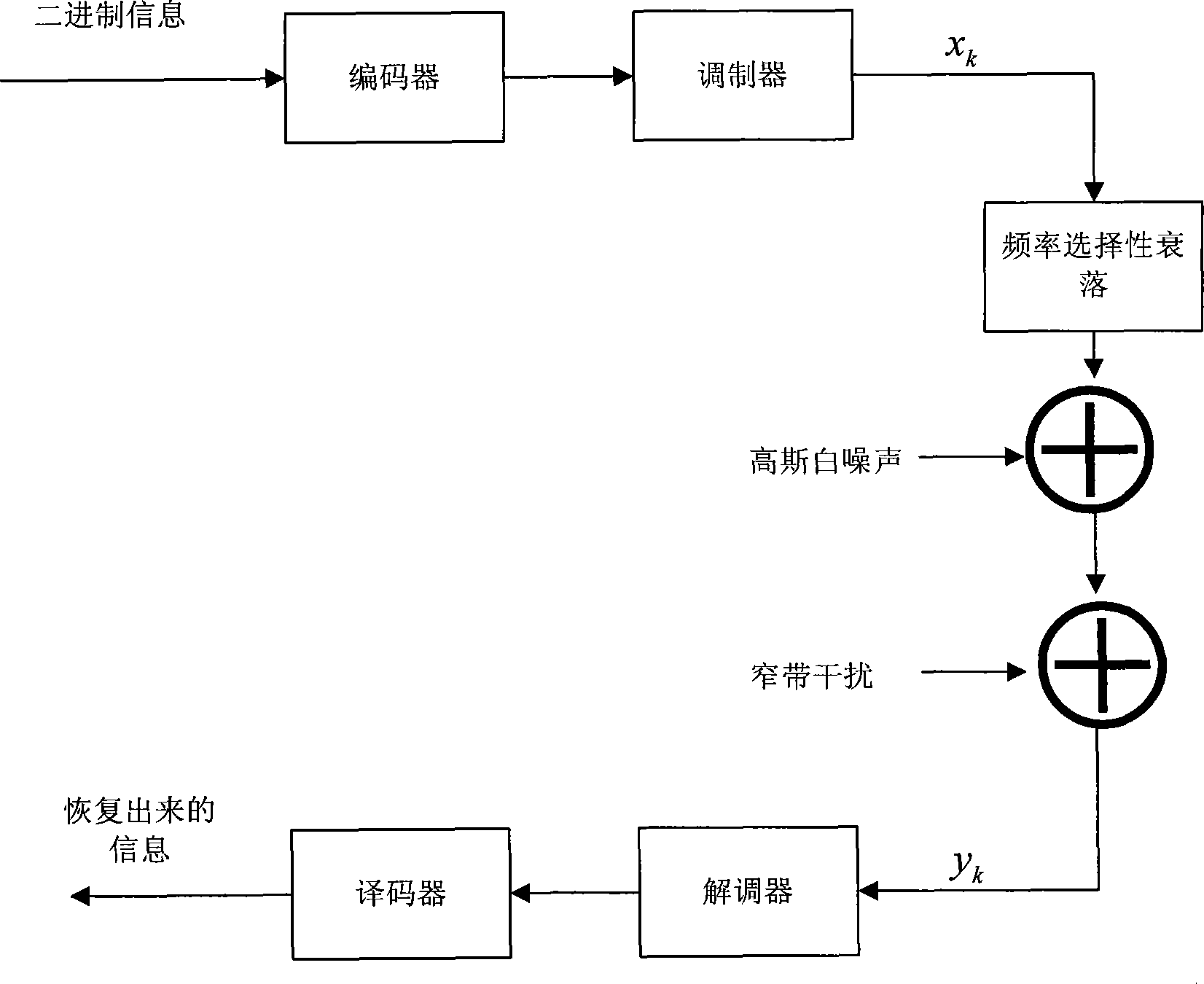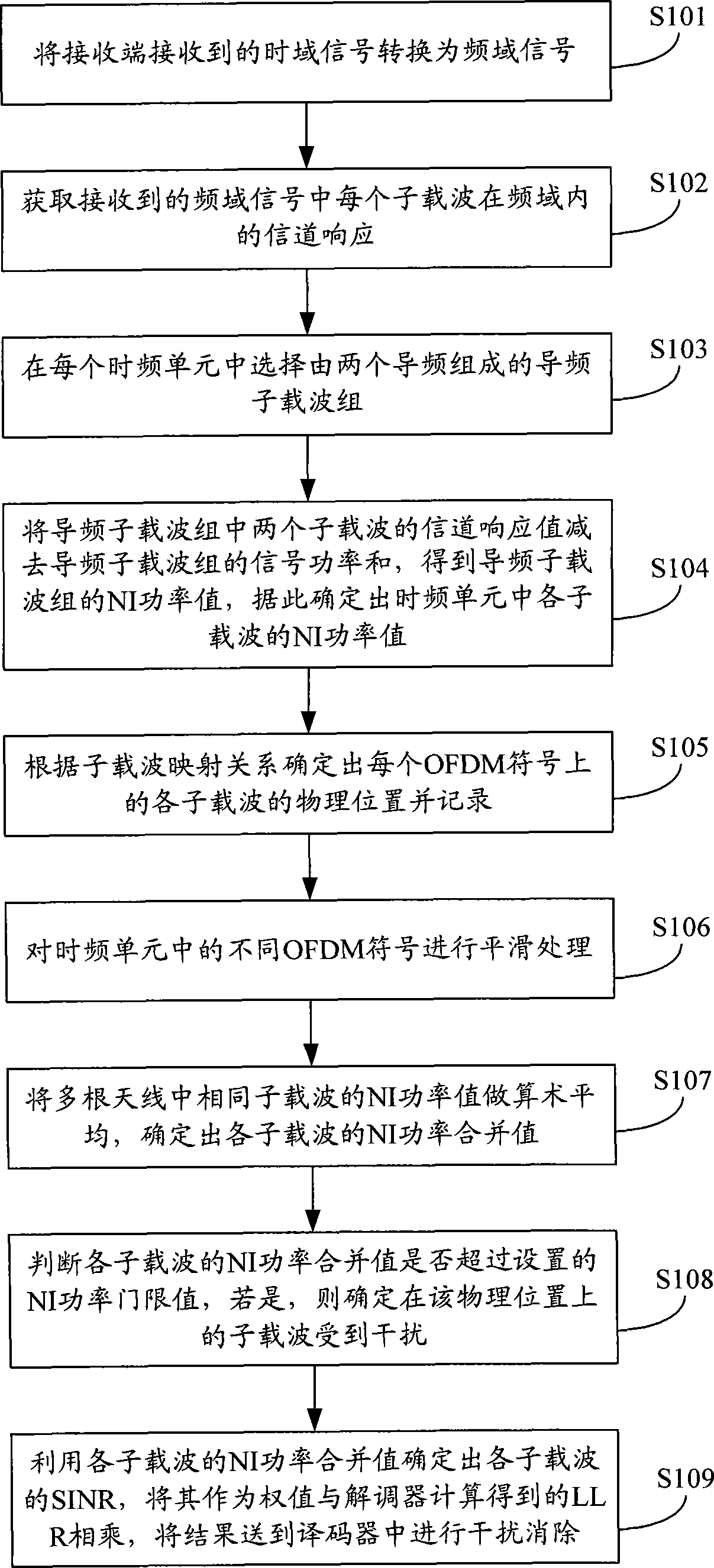Narrow-band interference detecting method and device in MIMO-OFDM (Multiple Input Multiple Output-Orthogonal Frequency Division Multiplexing) system
A MIMO-OFDM, narrowband interference technology, applied in the field of mobile broadband wireless access, can solve problems such as inability to accurately detect narrowband interference power, and achieve the effect of remarkable effect, simple calculation, and improved performance
- Summary
- Abstract
- Description
- Claims
- Application Information
AI Technical Summary
Problems solved by technology
Method used
Image
Examples
Embodiment Construction
[0051]Aiming at the defects of the traditional narrowband interference detection method, the present invention proposes a more accurate narrowband interference detection method for MIMO-OFDM system, which is combined with the MAP algorithm at the receiving end of the MIMO system, even when the narrowband interference is weak, The location and power of narrowband interference can be accurately detected. The performance of the MIMO-OFDM system can be greatly improved by performing adaptive narrowband interference suppression through this method.
[0052] see figure 2 , the figure is the coding structure diagram of the MIMO-OFDM system, in the figure, the received signal y k It can be expressed as
[0053] the y k = h k x k +NI k
[0054] where x k Indicates the kth transmitted signal, h k is the channel response in the frequency domain, N k represents additive white noise, I k is the interference, and k is the subcarrier sequence number. Combine noise and interferin...
PUM
 Login to View More
Login to View More Abstract
Description
Claims
Application Information
 Login to View More
Login to View More - R&D
- Intellectual Property
- Life Sciences
- Materials
- Tech Scout
- Unparalleled Data Quality
- Higher Quality Content
- 60% Fewer Hallucinations
Browse by: Latest US Patents, China's latest patents, Technical Efficacy Thesaurus, Application Domain, Technology Topic, Popular Technical Reports.
© 2025 PatSnap. All rights reserved.Legal|Privacy policy|Modern Slavery Act Transparency Statement|Sitemap|About US| Contact US: help@patsnap.com



